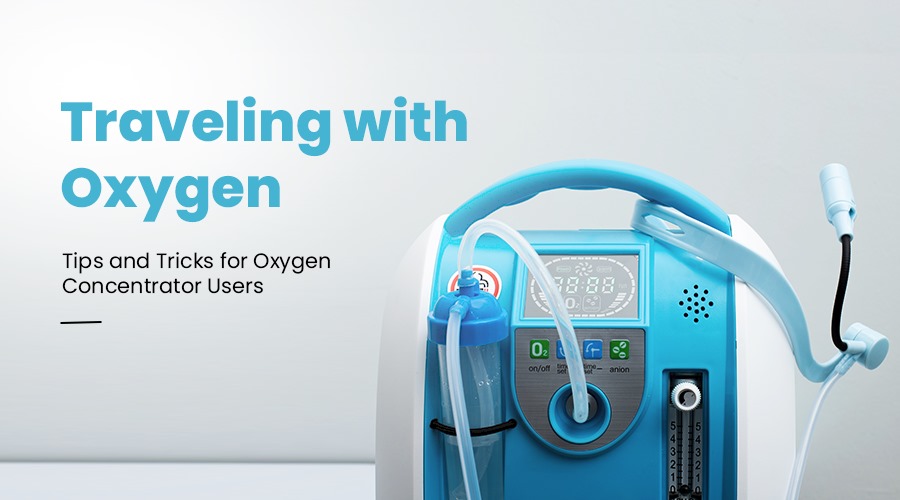Traveling with Oxygen: Tips and Tricks for Oxygen Concentrator Users




Traveling lets you discover new destinations, spend time with family and friends, or just soak in a different environment – it's a fantastic way to break routine. But if you need extra oxygen because of a health condition, the idea of going on a trip can feel overwhelming. The reassuring part is that by getting ready and having the right knowledge, you can set out on your travels feeling self-assured.
In this blog, we'll provide useful advice and strategies for those who use an oxygen concentrator, so your journey is not only safe but also filled with joy.
Understanding Oxygen Concentrators
Before we dive into the specifics of traveling with oxygen, let's start by understanding what oxygen concentrators are. These portable devices are designed to provide a continuous flow of oxygen to individuals who require it for various medical conditions, such as chronic obstructive pulmonary disease (COPD), asthma, or other respiratory disorders.
A portable oxygen concentrator works by extracting oxygen from the surrounding air and delivering it to the user via a nasal cannula or mask.
Now, let's explore some essential tips and tricks to make your travels smooth and stress-free while using an oxygen machine.
Tips And Tricks To Make Your Travels Smooth
1. Consult Your Healthcare Provider
Before planning your trip, it's crucial to consult your healthcare provider. They can assess your health status, adjust your oxygen flow rate if needed, and provide you with a written statement detailing your medical condition and the necessity for oxygen therapy. This document will be crucial when dealing with airlines, hotels, and other travel-related services.
2. Notify Airlines in Advance
When booking your flight, inform the airline about your oxygen needs. Most airlines have specific policies and guidelines for passengers traveling with a portable oxygen machine. They can provide information on how to bring your device on board and what to expect during the security screening process.
3.Pack Adequately
Make a checklist of everything you need for your trip. Along with your o2 concentrator, pack extra oxygen tubing, cannulas, and masks. Ensure that your concentrator's batteries are fully charged and have a backup power source, such as extra batteries or a portable charger. Don't forget your prescription medications and any necessary medical supplies.
4. Research Your Destination
Before traveling, research your destination's healthcare facilities, including hospitals and pharmacies. This is important in case you require medical assistance or a refill of your oxygen supplies. Research about the local medical emergency numbers as well.
5. TSA Security Screening
When going through airport security, inform the Transportation Security Administration (TSA) officers that you have an oxygen concentrator. They will provide guidance on how to handle your device during the screening process. These regulations allow you to bring your oxygen concentrator on board, and it doesn't count as one of your carry-on items.
6. Plan for Air Travel
During the flight, use your oxygen concentrator as instructed by your healthcare provider. Ensure your device is stowed securely, and follow the airline's guidelines for its usage.
7. Accommodation Considerations
When booking accommodations, let the hotel know about your oxygen needs. Check if they have accessible rooms or any specific requirements. Make sure your room has adequate electrical outlets to charge your concentrator.
8. Enjoy Your Trip
With proper preparation, there's no reason why you can't enjoy your trip to the fullest. Explore your destination at a comfortable pace, stay hydrated, and take breaks when needed. Don't forget to savor the moment and create lasting memories.
Wrapping Up
Traveling with an oxygen concentrator may require a bit more planning, but it shouldn't deter you from exploring the world! You can still make cherished memories. Just make sure to consult your healthcare provider and notify the airlines in advance. It is important to keep up with the regulations and guidelines.
Remember that your health and well-being come first, so prioritize your needs. Safe travels!











